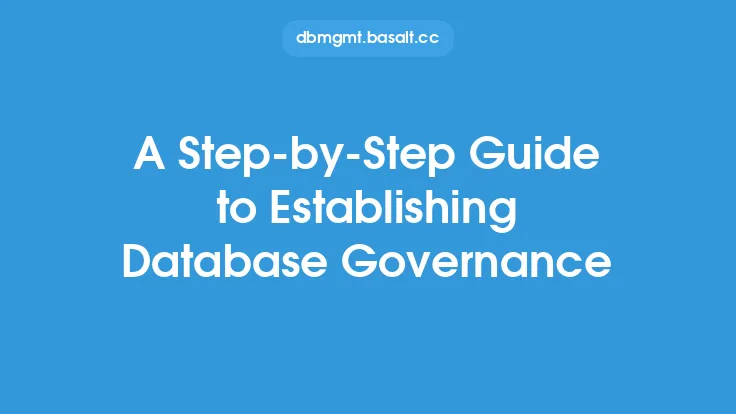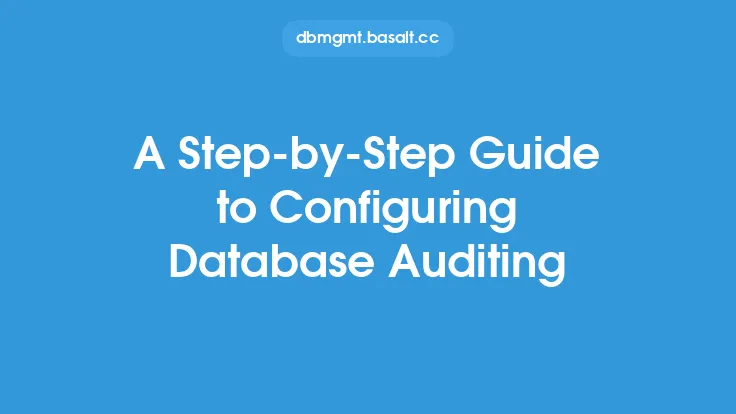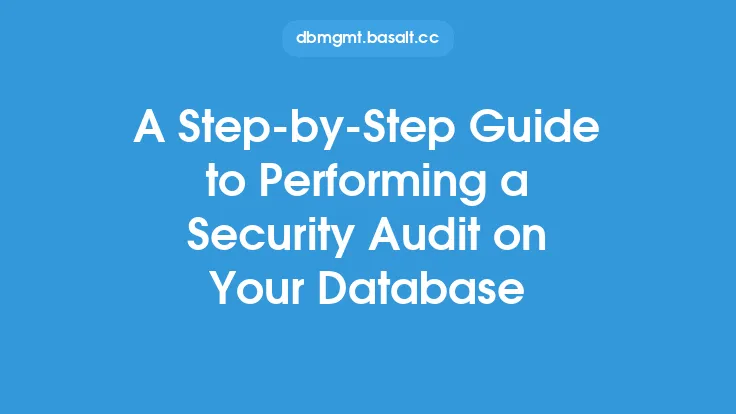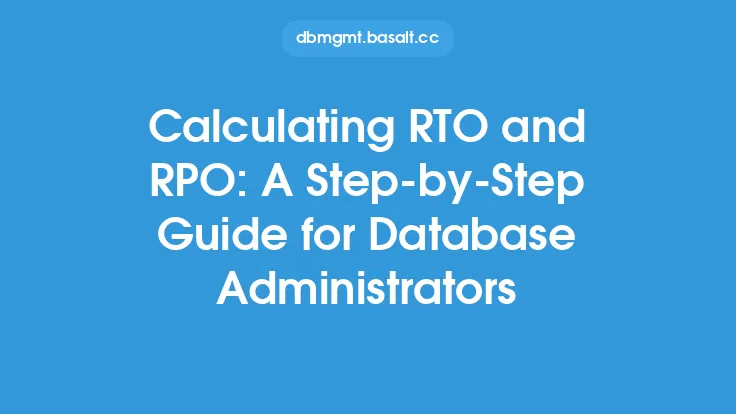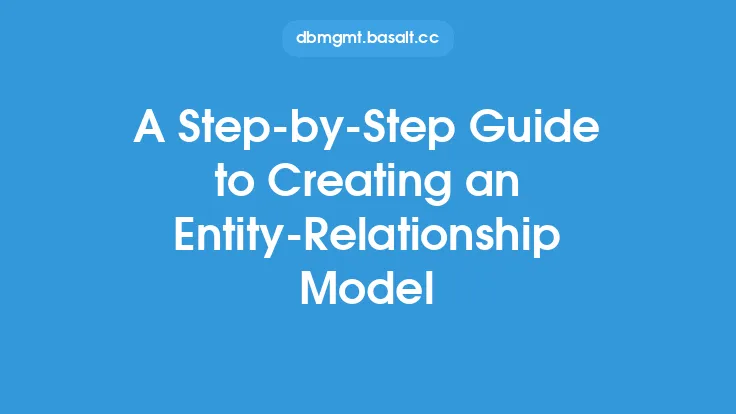Installing a database is a crucial step in setting up a robust data management system. The process involves several steps, from planning and preparation to actual installation and configuration. In this article, we will walk you through a step-by-step guide to installing a database, covering the essential aspects of the process.
Planning and Preparation
Before installing a database, it is essential to plan and prepare the environment. This includes selecting the right database management system (DBMS) for your needs, choosing the appropriate hardware and software configurations, and ensuring that the system meets the necessary requirements. The DBMS selection depends on factors such as the type of data, scalability requirements, and compatibility with existing systems. Popular DBMS options include relational databases like MySQL and PostgreSQL, as well as NoSQL databases like MongoDB and Cassandra.
Once the DBMS is selected, the next step is to choose the hardware and software configurations. This includes selecting the operating system, processor, memory, and storage. The operating system should be compatible with the DBMS, and the processor, memory, and storage should meet the minimum requirements specified by the DBMS vendor. Additionally, it is essential to ensure that the system has the necessary dependencies and libraries installed.
Downloading and Installing the Database Software
After planning and preparation, the next step is to download and install the database software. This involves downloading the DBMS installation package from the vendor's website or a trusted repository. The installation package should include the DBMS software, documentation, and any additional tools or utilities required for installation and configuration.
The installation process typically involves running an installation script or executable file, which guides the user through the installation process. The script or executable file may prompt the user to accept the license agreement, choose the installation location, and select the components to install. It is essential to follow the installation instructions carefully and ensure that all necessary components are installed.
Configuring the Database
After installing the database software, the next step is to configure the database. This involves setting up the database instance, creating the necessary database objects, and configuring the database parameters. The database instance is the core component of the database, and it manages the database files, processes, and connections.
Configuring the database instance involves setting up the database name, port number, and authentication parameters. The database name is used to identify the database instance, and the port number is used to connect to the database. The authentication parameters include the username, password, and authentication method.
Creating Database Objects
After configuring the database instance, the next step is to create the necessary database objects. This includes creating databases, schemas, tables, indexes, and views. A database is a collection of related data, and it is the highest-level object in the database hierarchy. A schema is a logical grouping of database objects, and it is used to organize the database objects.
Creating tables involves defining the table structure, including the columns, data types, and constraints. Indexes are used to improve query performance, and views are used to provide a simplified interface to the underlying data. It is essential to design the database objects carefully, considering factors such as data normalization, scalability, and performance.
Securing the Database
After creating the database objects, the next step is to secure the database. This involves configuring the database security parameters, including authentication, authorization, and encryption. Authentication is the process of verifying the identity of users and applications, and authorization is the process of granting access to database objects.
Encryption is used to protect the data from unauthorized access, and it involves encrypting the data at rest and in transit. It is essential to use strong passwords, enable encryption, and configure the database security parameters carefully to ensure the security and integrity of the data.
Testing and Verification
After securing the database, the next step is to test and verify the database installation. This involves testing the database connectivity, querying the database, and verifying the data integrity. Testing the database connectivity involves connecting to the database using a client tool or application, and querying the database involves executing SQL statements to retrieve and manipulate data.
Verifying the data integrity involves checking the data for consistency and accuracy, and ensuring that the data is handled correctly by the database. It is essential to test the database thoroughly, considering factors such as performance, scalability, and security, to ensure that the database is functioning correctly and meets the necessary requirements.
Conclusion and Next Steps
In conclusion, installing a database is a complex process that involves several steps, from planning and preparation to actual installation and configuration. It is essential to follow the steps carefully, considering factors such as scalability, performance, and security, to ensure that the database is functioning correctly and meets the necessary requirements.
After installing the database, the next steps involve populating the database with data, configuring the database for high availability and disaster recovery, and monitoring the database performance. Additionally, it is essential to stay up-to-date with the latest database technologies and best practices, and to continuously evaluate and improve the database installation to ensure that it meets the evolving needs of the organization.
